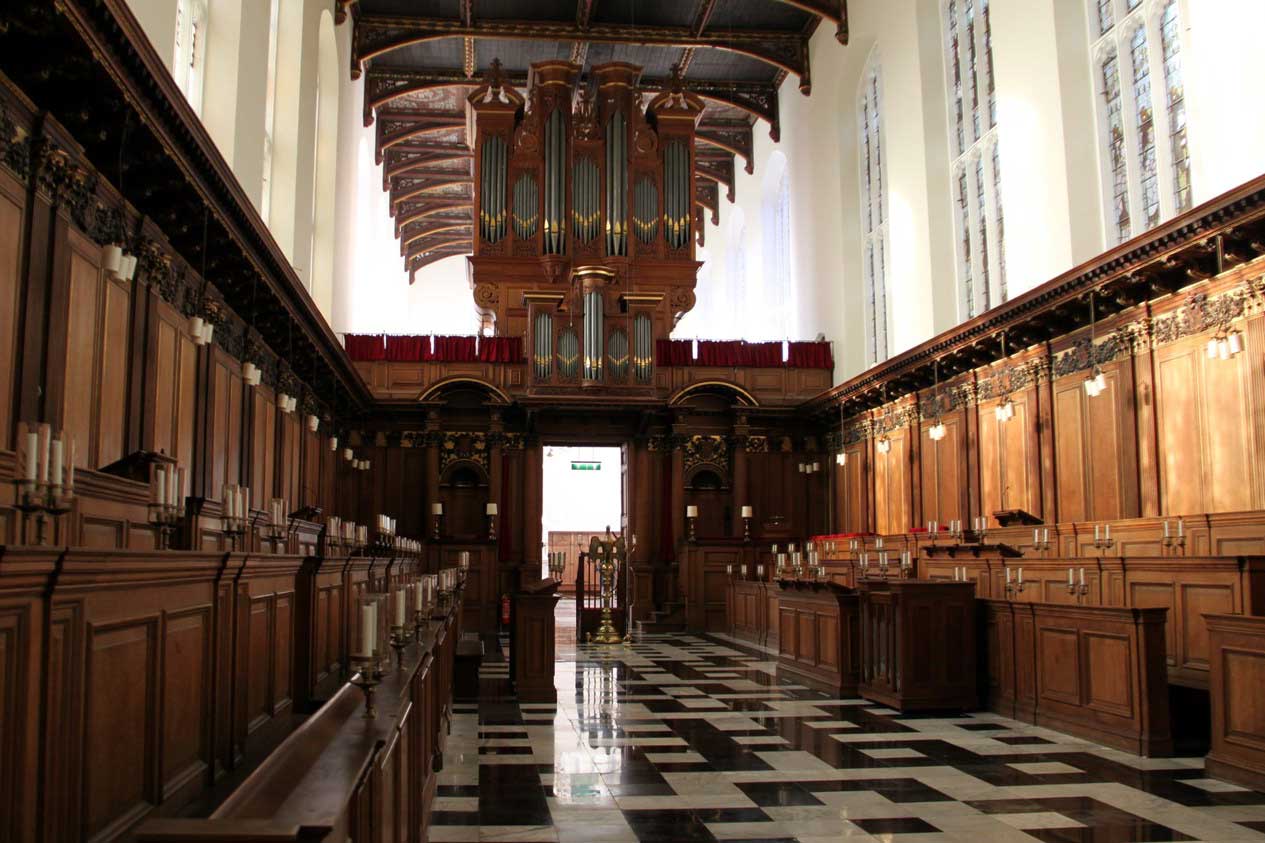Latest News
Distributed Audio Solution for Trinity College Chapel
RG Jones has carried out a complete distributed audio solution for the Chapel at Trinity College, Cambridge.
Trinity College was originally founded by Henry VIII in 1546 as part of the University of Cambridge. The chapel, with its notable clock tower, sits at the far end of the Great Court and was begun by Mary I in 1554 in memory of her father, Henry VIII. The ante-chapel contains statues of many famous Trinity men, including Roubillac’s sculpture of Isaac Newton, while the chapel itself contains a Metzler organ — one of only two instruments by this respected maker in Great Britain. It is contained within the restored late 17th-century case built by England’s most famous organ builder, ‘Father’ Smith.
The chapel is a high point of a visit to Trinity, and an important part of College life for a number of its members. The glory of Trinity’s chapel is its choir composed of talented male and female choral scholars, who put considerable energy into singing beautifully alongside reading for a degree.
RG Jones’ project manager, Jeff Woodford, and installation manager, Jon Berry were tasked with implementing a design in a listed building under English Heritage restrictions, that called for the loudspeakers to be set discreetly on the shelving under the pews and the transformer distribution boxes to be similarly concealed.
Because the system was designed to handle gentle reinforcement rather than public address) sequential delay times were measured by Berry from each of the mic positions to each of the Chapel’s 14 speaker zones (based on seven mic positions feeding each of the North and South sides). Advanced programming ensured that the voice of the speaker or celebrant is heard first at the local position.
A further four zones cover the organ loft (where the equipment rack is situated), the ante-chapel, control screen position and altar.
Jon Berry explained how he used London Architect’s Logic programming of the two Soundweb BLU-100 devices (configured 12-in/8-out), to enable them to sense when audio is being passed into the system. “At the point that it reaches a certain level it will trigger a preset, which sets the delay time appropriate to the particular speaker, ensuring that the listener can detect exactly where the sound source is.
“When two people are speaking from different positions, it will use custom designed Logic automatically to recall a different preset which will deliver a compromise between the two positions. The system simply auto configures and triggers the delay time, via the Logic preset recalls.”
With the installation of 127 100V line Control 52’s — a radical number for a listed building — and the additional number of zones, a BSS BLU-BOB2 was incorporated into the design to expand the number of outputs.
The Control 52’s were specified by Peter Mapp since they are designed to deliver superb high fidelity sound via a low distortion 60 mm (2.5 in) driver. Jeff Woodfordstated that due to the excellent fixing plate / wall bracket assembly, and ball and socket arrangement that allowed allows each speaker to be angled up to 45° off-axis, they had experienced no difficulty in concealing and pointing these miniature speakers.
In terms of operation, RG Jones simplified the use of Soundweb, mindful that it would be used by clergy rather than audio technicians. “We created our own front end GUI, which communicates directly with the system,” says Woodford. “There is one fixed position and a portable tablet with a docking station next to the equipment rack, which can be used on WiFi, with a further docking station downstairs in the centre of the Chapel.”
New speaker cabling and mic Starquad infrastructure has been run from the organ loft, where the equipment cabinets are located, concealed under the pews and colour matched to its surround to avoid detection.
Jon explains “This was the first time the Chapel had used sound reinforcement, and given the restrictions and number of mic positions, it proved to be a particularly challenging project. But thanks to the discreet and versatile nature of the Control 52’s, and programming flexibility of Soundweb’s London Architect, we have been able to deliver an optimum localised sound to every seat in the room via a simple interface”.
Jeff continued “the college is over 450 year old and we recognised the importance of handling the interior with care and ensuring that the installation was sympathetic to its surroundings. RG Jones has a long history of working within historical venues and we pride ourselves on setting strict guidelines to meet with these requirements”.
Thanks to the discreet and versatile nature of the Control 52s and flexibility of Soundweb’s London Architect we have been able to deliver an optimum localised sound to every seat in the room via a simple interface
High Resolution Images
Category: Install Projects











